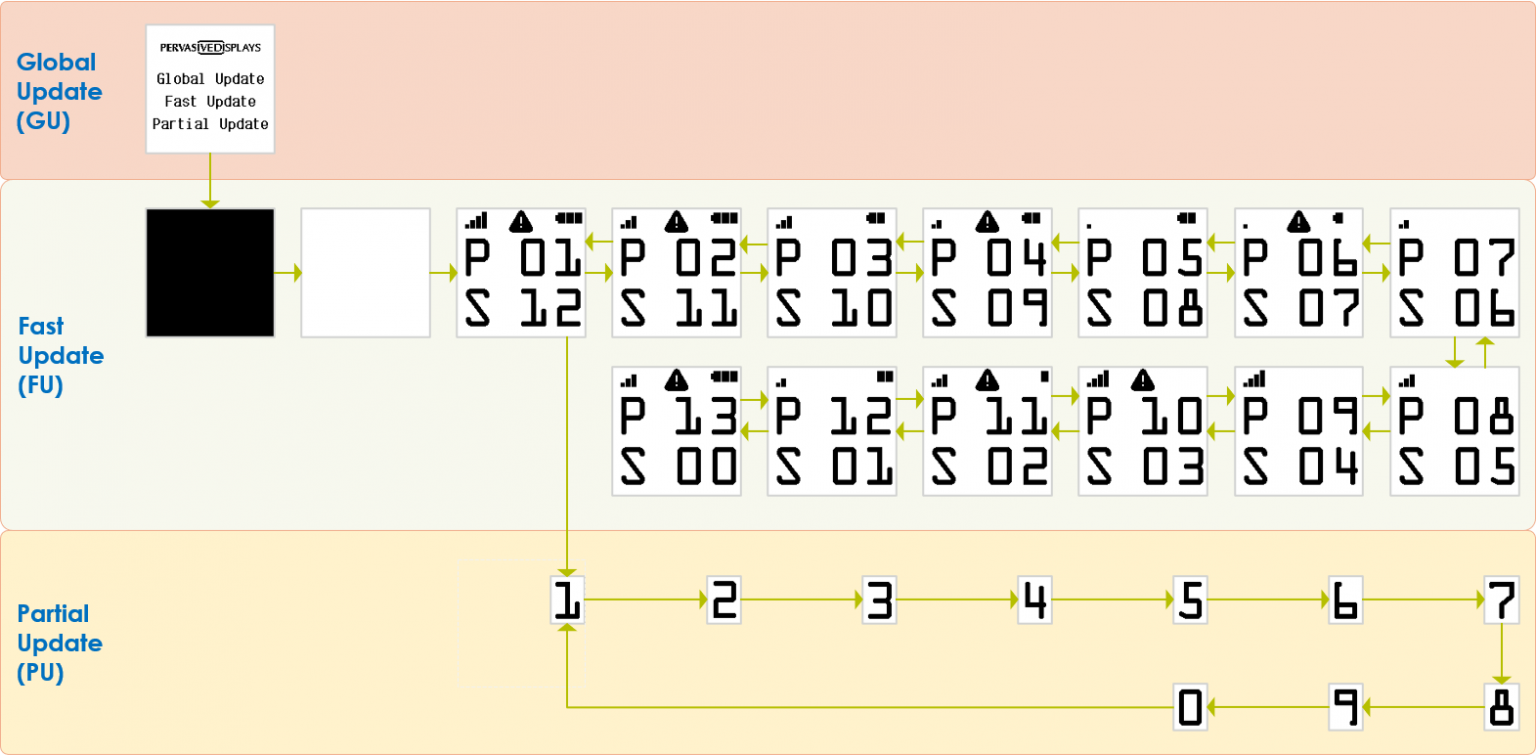Updating the Display¶
Update
The different update modes
A global update (full update or global refresh) will impact every pixel on the display, while a fast/partial update only impacts the pixels that need to change to display the new image. With a fast update (local update or fast refresh), the full image is sent to the driver IC, which carries out the image data comparison. A partial update requires an area (window) to be defined and the system side sends just the image data specific to that area but uses the same driving waveform to carry out the update.
Global update of a 2.7” Black-White-Red EPD
Warning
Partial Update support has been suspended indefinitely.
Pixels outside the Partial Update window (i.e. the unchanged pixels) degrade faster over time with continued use of this functionality. These unchanged pixels are in an unbalanced/unstable state, which impacts the lifespan of the display. The refresh rate is also marginally faster than Fast Update, thus outweighing any benefits.
Therefore, we strongly recommend the use of Fast Update.
| Update type | Normal update | Fast update | Partial update |
|---|---|---|---|
| Initialization | Panel initialization | Panel initialization | Panel initialization |
| Supported colors | Multiple colors and monochrome (BW) | Monochrome (BW) | Monochrome (BW) |
| Image data upload | Full screen image New image buffer with all 0x00 buffer |
Full screen image Previous image buffer and new image buffer |
Partial window image Previous image buffer and new image buffer |
| Panel update | Whole screen Flashing effect |
Whole screen Fast mode |
Partial window Fast mode |
| Image quality | Optimal quality | Optimal quality + Possible ghosting | Visible ghosting (worse than fast update) |
| Upload image speed | Slow | Slow | Fast |
| Update image speed | Slow | Fast | Fast |
| Overall speed | Slow | Faster | A bit faster than fast update |
| Lifespan impact | No | No | Yes |
